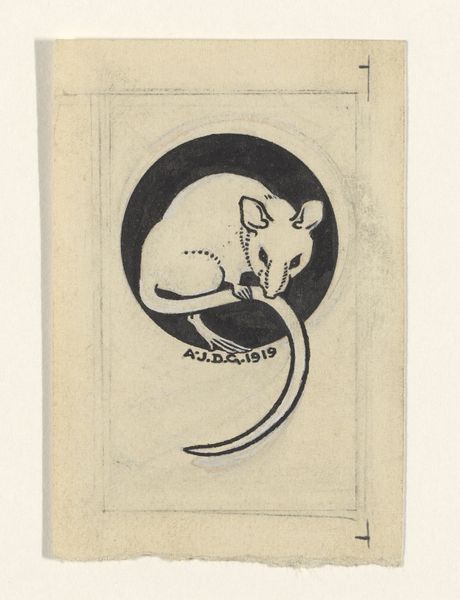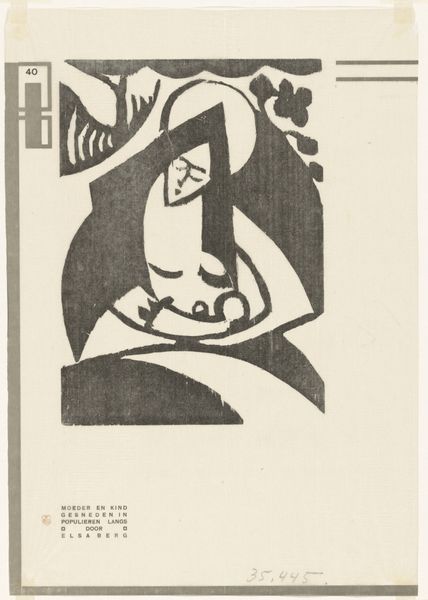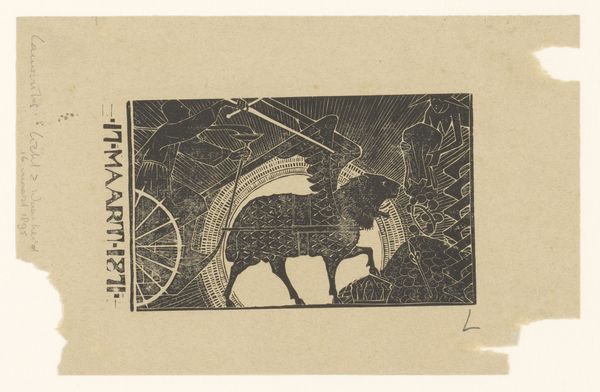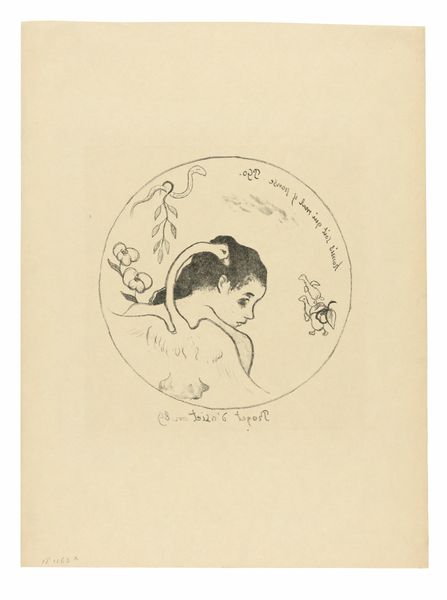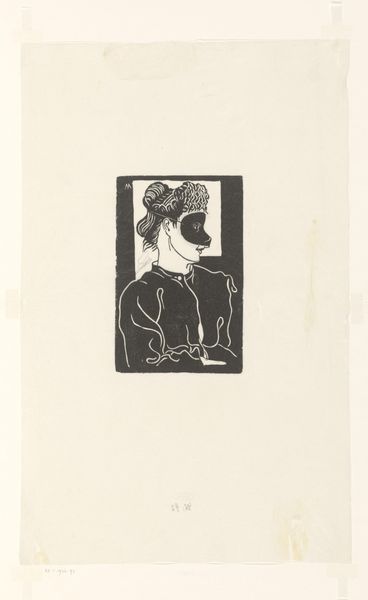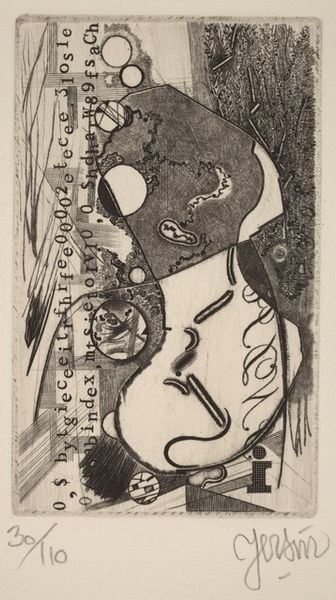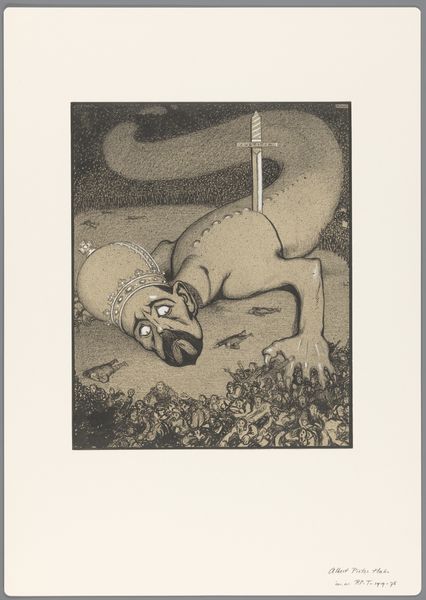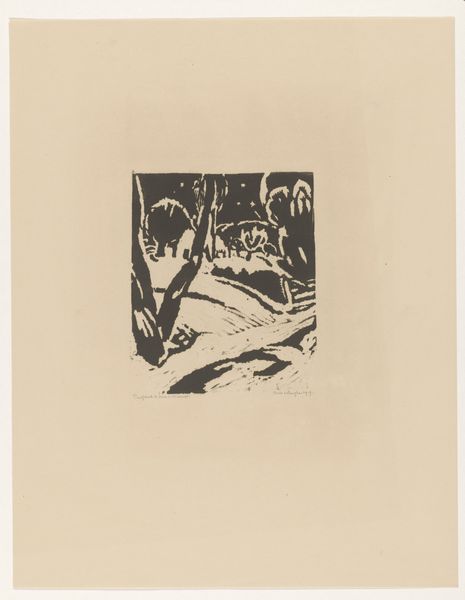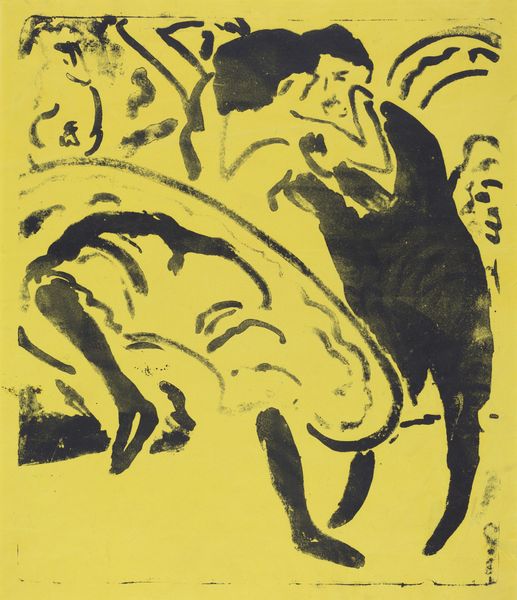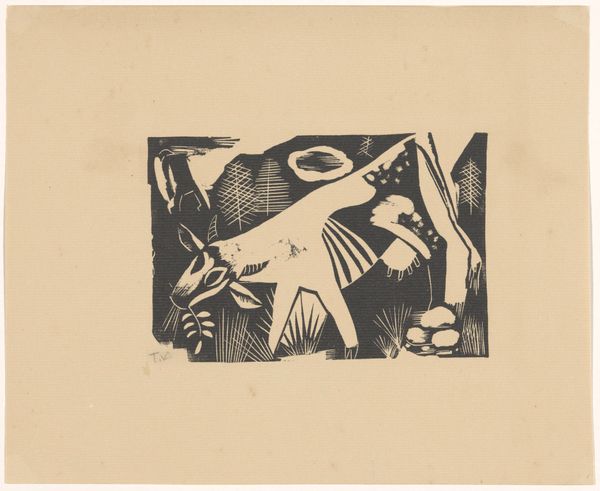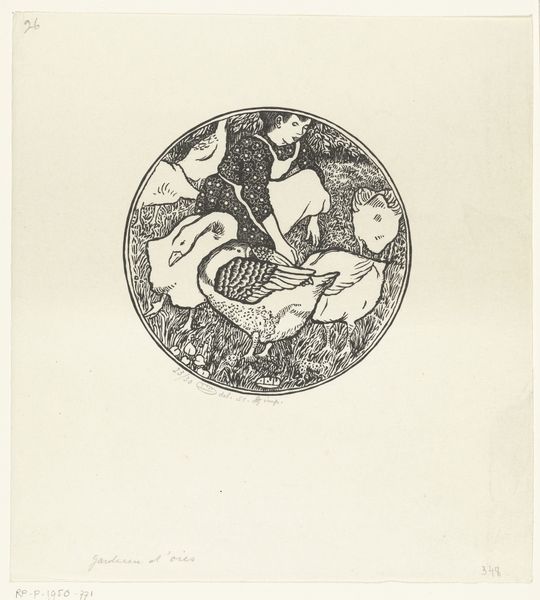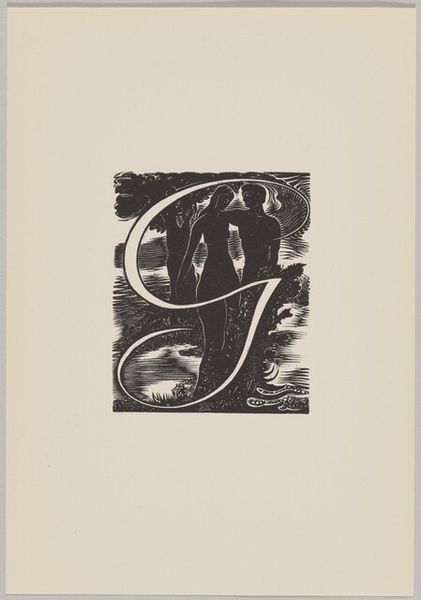
drawing, graphic-art, print
#
drawing
#
graphic-art
#
art-nouveau
# print
#
figuration
#
historical photography
#
line
Dimensions: height 110 mm, width 79 mm
Copyright: Rijks Museum: Open Domain
Editor: Here we have "Muis," or "Mouse," a 1919 print by Julie de Graag currently held at the Rijksmuseum. There's something so charming about its stark simplicity, just black ink on a cream background. I’m struck by the economy of line. What do you see in this piece from a formalist perspective? Curator: Indeed. Note the meticulous use of line to define the subject's form against the stark negative space of the circular background. Consider how this geometric constraint focuses our attention. The flowing lines create a visually striking interplay, delineating the figure with minimal yet effective detail. We see Art Nouveau's influence here. Editor: So, you're highlighting how the composition draws the eye, essentially isolating and framing the subject? The line work almost has a calligraphic feel. Curator: Precisely. De Graag employs line as both contour and texture. Look at the tail: the curve acts as a dynamic counterpoint to the static circle. Semiotically, what might that contrast signify? Is there a tension between the organic and the geometric, perhaps reflecting broader anxieties of the era? Editor: I hadn't considered that interpretation. I was focused on the image itself, its pure, distilled form, as you pointed out. The balance she achieves between detail and simplification is quite remarkable. I’ll have to think about the potential social meanings embedded in the forms. Curator: Visual analysis of line and form often reveals deeper structural insights. It forces us to confront how the artist chooses to depict reality. Editor: It’s amazing how much one can unpack by focusing on form alone. Thanks for showing me how to consider beyond just subject matter! Curator: My pleasure. Let's proceed to the next work and see what new insights await.
Comments
No comments
Be the first to comment and join the conversation on the ultimate creative platform.
